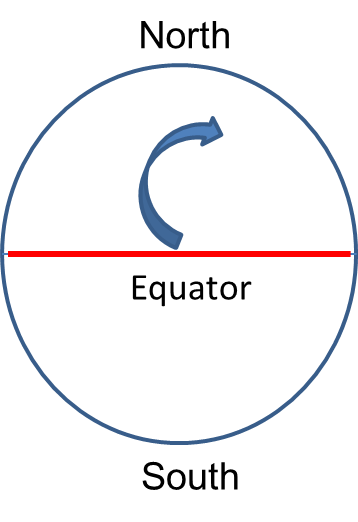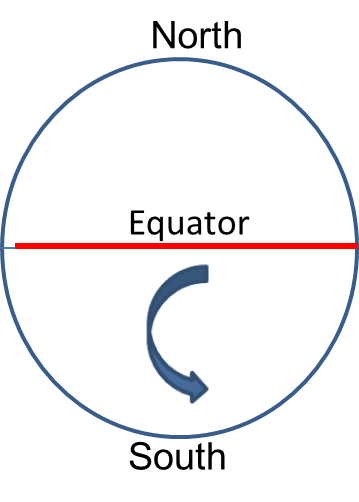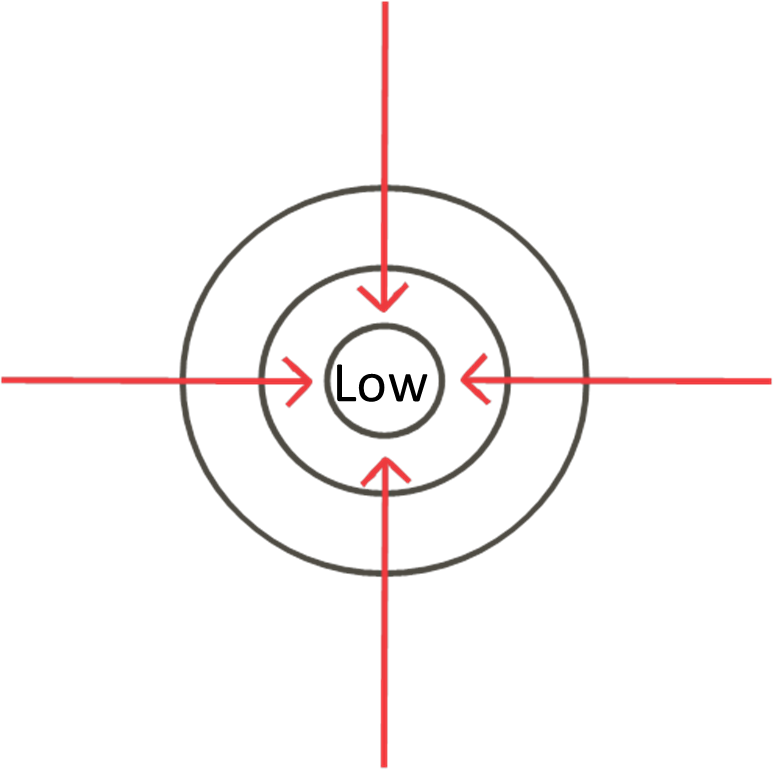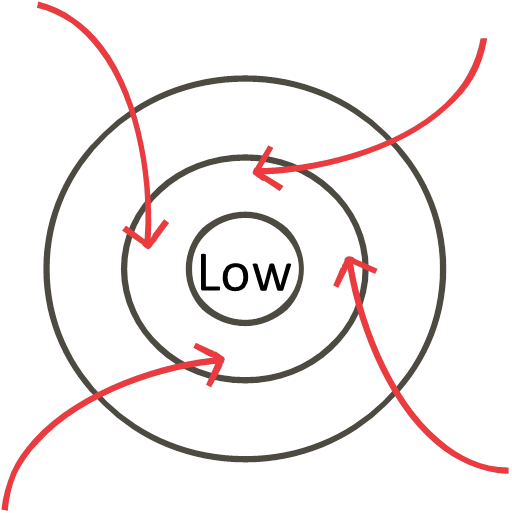Why do Tropical Cyclones always Form more than 5 degrees of Latitude away from the Equator?
The formation of a tropical cyclone requires a number of favourable environmental conditions and one of them is a suitable latitude. Almost all tropical cyclones form over regions more than 5 degrees of latitude away from the Equator and very few occur near the Equator. To explain why this happens, we need to first understand which forces in the atmosphere are critical to the formation of tropical cyclones. There are three such forces including the frictional force, pressure gradient force and Coriolis force due to the Earth's rotation. The characteristics of these three forces are introduced below:
- Frictional force: generated when the air molecules move and rub against ambient substances (for example, the ground surface). Frictional force causes the air molecules to lose kinetic energy and slow down.
- Pressure gradient force: arising from the pressure difference between two places. The air molecules are pushed from an area of higher pressure towards an area of lower pressure. The air flow will be faster when the pressure difference is larger.
- Coriolis force: the self-rotation of the Earth can cause a deflection in the air motion. Simply put, any place on the Earth's surface moves from west to east as the Earth rotates. A point on Earth will traverse a shorter distance in a day, or in other words, at a slower moving speed if it is further away from the Equator. When air moves towards the north in the Northern Hemisphere, it maintains its initial eastward moving speed due to inertia while the Earth's surface underneath is slower. Relative to the Earth's surface, the air will appear to be deflected to the right in the Northern Hemisphere (see Figure 1). The situation reverses in the Southern Hemisphere and the moving air will appear to be deflected to the left (see Figure 2). In effect, it looks like some kind of force is in play to push the air to the right (Northern Hemisphere) or to the left (Southern Hemisphere). This fictitious force is named the Coriolis force in Meteorology. The Coriolis force increases with an increase in latitude. Or, the closer to the Equator, the smaller the Coriolis force. As a result, the deflection caused by the Coriolis force will become increasingly prominent in higher latitudes.

Figure 1 Moving air stream deflected to the right in the Northern Hemisphere

Figure 2 Moving air stream deflected to the left in the Southern Hemisphere
We all know that the air pressure decreases as we move towards the centre of an area of low pressure. If there were only pressure gradient force and frictional force in the atmosphere, the air would just flow from the surroundings of higher pressure to the centre of the low pressure without any rotation (see Figure 3). However, in the presence of Coriolis force, the air will not just move from the surroundings towards the centre of the low pressure, but will also be deflected leading to the formation of a vortex (see Figure 4), which is favourable to tropical cyclone formation.

Figure 3 Air streams moving perpendicularly across the centre of low pressure

Figure 4 Air streams moving to the centre of low pressure following helical paths in the Northern Hemisphere
As evident from past observations, tropical cyclones are difficult to form over a region within 5 degrees of latitude from the Equator because the Coriolis force there is too small to generate a vortex. That said, the formation of tropical cyclone still hinges on other environmental factors. Under other very favourable conditions, tropical cyclones may still form in the vicinity of the Equator. Tropical Cyclone "Vamei" in December 2001[1] was the first tropical cyclone on record formed within 1.5 degrees latitude of the Equator[2].
References
- Tropical Cyclones in 2001, Hong Kong Observatory
- Chang, C.-P., C.-H. Liu, and H.-C. Kuo (2003), Typhoon Vamei: An equatorial tropical cyclone formation, Geophys. Res. Lett., 30, 1150, doi:10.1029/2002GL016365, 3.